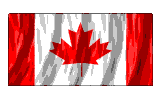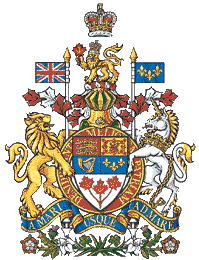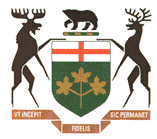
A Brief History of Toronto
 French explorer Etienne Brule discovered Toronto in 1615.
Several Indian tribes, the Huron, Petun, and Iroquois, already inhabited the area. These tribes utilized
the trails and water routes, which ran in and around Toronto to the Gulf of Mexico, making Toronto a
viable place for a large city. It took only half a century to kill off many of the Indians with European
diseases. During this same time period the British were setting up the colonies in New England.
There quickly became a rivalry to control the fur trade and other resources, and the result was
the French and Indian War. The French and British took turns building forts along the shores of
Lake Ontario. In September of 1760 the British defeated the French, and ended French rule in Canada.
Over the next thirty years the British controlled and revived the fur trade in and around Toronto
(Stillwater Productions).
French explorer Etienne Brule discovered Toronto in 1615.
Several Indian tribes, the Huron, Petun, and Iroquois, already inhabited the area. These tribes utilized
the trails and water routes, which ran in and around Toronto to the Gulf of Mexico, making Toronto a
viable place for a large city. It took only half a century to kill off many of the Indians with European
diseases. During this same time period the British were setting up the colonies in New England.
There quickly became a rivalry to control the fur trade and other resources, and the result was
the French and Indian War. The French and British took turns building forts along the shores of
Lake Ontario. In September of 1760 the British defeated the French, and ended French rule in Canada.
Over the next thirty years the British controlled and revived the fur trade in and around Toronto
(Stillwater Productions).
 In 1787 a British commander, Lord Dorchester, negotiated the Toronto Purchase. Toronto thus
became a fourteen-mile piece of land along Lake Ontario that extended thirty miles inland. In 1791
Britain split the colony of Quebec into two provinces, Upper and Lower Canada. The loyalists,
who largely colonized Upper Canada, objected to having French laws and culture imposed on them and
therefore negotiated the split. Thus Quebec remained mainly French, and Upper Canada, British.
In 1792, John Graves Simcoe was elected lieutenant governor of Upper Canada and was sent to
Toronto with a small army of soldiers and laborers to establish a new town. He did not receive
financial backing, for Lord Dorchester the head of military expenditures, did not agree that
Toronto was the best place to start the town. Simcoe was still able to start construction on a
small scale, and he set aside a ten-block town. He also set up 100-acre lots running north of
town to attract officials; he hoped the promise of land would make the wilderness outpost more
attractive to them. He cleared Yonge Street, which opened land up for more settlement and played
an important role in the town�s markets. He erected the first public buildings, but in 1796 was
sent back to Britain. Simcoe had started a vibrant town, in 1797 there were 241 occupants, and by
1812 the population had crept up to 700 (Stillwater Productions).
In 1787 a British commander, Lord Dorchester, negotiated the Toronto Purchase. Toronto thus
became a fourteen-mile piece of land along Lake Ontario that extended thirty miles inland. In 1791
Britain split the colony of Quebec into two provinces, Upper and Lower Canada. The loyalists,
who largely colonized Upper Canada, objected to having French laws and culture imposed on them and
therefore negotiated the split. Thus Quebec remained mainly French, and Upper Canada, British.
In 1792, John Graves Simcoe was elected lieutenant governor of Upper Canada and was sent to
Toronto with a small army of soldiers and laborers to establish a new town. He did not receive
financial backing, for Lord Dorchester the head of military expenditures, did not agree that
Toronto was the best place to start the town. Simcoe was still able to start construction on a
small scale, and he set aside a ten-block town. He also set up 100-acre lots running north of
town to attract officials; he hoped the promise of land would make the wilderness outpost more
attractive to them. He cleared Yonge Street, which opened land up for more settlement and played
an important role in the town�s markets. He erected the first public buildings, but in 1796 was
sent back to Britain. Simcoe had started a vibrant town, in 1797 there were 241 occupants, and by
1812 the population had crept up to 700 (Stillwater Productions).
 On April 27, 1813 the Americans, fighting the War of 1812 for seizure of all British property
on the East coast stormed into Toronto and defeated the outnumbered and unprepared British troops.
They quickly withdrew for their attack was more a symbol of power; they succeeded in setting fear
in the hearts of the Toronto residents. Peace was signed in December of 1814 and news reached
Toronto by February of 1815. The war held some important economic gains for Toronto. Many of
the merchants made fortunes by supplying the British Army, prices jumped sky high because goods
were not coming in on the dangerous transportation routes, and many towns� people had full
employment during the war. The War marked the turnaround in Toronto�s history, and it helped
to secure their future success (Stillwater Productions).
On April 27, 1813 the Americans, fighting the War of 1812 for seizure of all British property
on the East coast stormed into Toronto and defeated the outnumbered and unprepared British troops.
They quickly withdrew for their attack was more a symbol of power; they succeeded in setting fear
in the hearts of the Toronto residents. Peace was signed in December of 1814 and news reached
Toronto by February of 1815. The war held some important economic gains for Toronto. Many of
the merchants made fortunes by supplying the British Army, prices jumped sky high because goods
were not coming in on the dangerous transportation routes, and many towns� people had full
employment during the war. The War marked the turnaround in Toronto�s history, and it helped
to secure their future success (Stillwater Productions).
 Immigrants began arriving in Toronto in the years following the War. Yonge Street
became the central supply hub for the city and the rural areas surrounding. New construction
started cropping up and Toronto was on its way to becoming a bustling city. The Northern
railroad reached Toronto in 1851, further opening up trade routes with the west and south
(Stillwater Productions).
Toronto is further developed and begins to gather all of the characteristics of successful
city life, a public library, school systems, banks, and theatres to name a few. In 1914 the
Royal Ontario Museum is built. In 1952, twelve of the areas cities and boroughs join to create
Metropolitan Toronto. 1954 brings the first subway system, connecting the newly enlarged metropolis.
Yorksdale Mall opens in 1964 bringing Toronto to the top for having Canada�s first suburban
plaza. The Toronto Zoo is opened in 1974, housing a large amount of animals in perfectly
sustained habitats
(T.O Kids). By 1989, Toronto has become similar to the hustling bustling city that
it is today. They reach number one on the list of garbage producers, perhaps because they pick
it up off their clean streets. Today, Toronto is one of the leading cities in the world.
Immigrants began arriving in Toronto in the years following the War. Yonge Street
became the central supply hub for the city and the rural areas surrounding. New construction
started cropping up and Toronto was on its way to becoming a bustling city. The Northern
railroad reached Toronto in 1851, further opening up trade routes with the west and south
(Stillwater Productions).
Toronto is further developed and begins to gather all of the characteristics of successful
city life, a public library, school systems, banks, and theatres to name a few. In 1914 the
Royal Ontario Museum is built. In 1952, twelve of the areas cities and boroughs join to create
Metropolitan Toronto. 1954 brings the first subway system, connecting the newly enlarged metropolis.
Yorksdale Mall opens in 1964 bringing Toronto to the top for having Canada�s first suburban
plaza. The Toronto Zoo is opened in 1974, housing a large amount of animals in perfectly
sustained habitats
(T.O Kids). By 1989, Toronto has become similar to the hustling bustling city that
it is today. They reach number one on the list of garbage producers, perhaps because they pick
it up off their clean streets. Today, Toronto is one of the leading cities in the world.

Website created by: Robert Parkhurst and Jennifer Pumphrey












